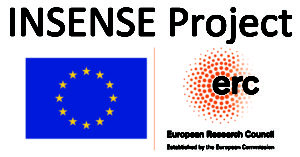Applications invited for the CIMEC Masters program. Here are a poster and brochure providing details.
Read MoreWeaver, Hickey, & van Zoest (2017). The impact of salience and visual working memory on the monitoring and control of saccadic behavior: An eye-tracking and EEG study.
In a concurrent eye-tracking and EEG study, we investigated the impact of salience on the monitoring and control of eye movement behavior and the role of visual working memory (VWM) capacity in mediating this effect. Participants made eye movements to a unique line-segment target embedded in a search display also containing a unique distractor. Target and distractor salience was manipulated by varying degree of orientation offset from a homogenous background. VWM capacity was measured using a change-detection task. Results showed greater likelihood of incorrect saccades when the distractor was relatively more salient than when the target was salient. Misdirected saccades to salient distractors were strongly represented in the error-monitoring system by rapid and robust error- related negativity (ERN), which predicted a significant adjustment of oculomotor behavior. Misdirected saccades to less-salient distractors, while arguably representing larger errors, were not as well detected or utilized by the error/ performance-monitoring system. This system was instead better engaged in tasks requiring greater cognitive control and by individuals with higher VWM capacity. Our findings show that relative salience of task-relevant and task- irrelevant stimuli can define situations where an increase in cognitive control is necessary, with individual differences in VWM capacity explaining significant variance in the degree of monitoring and control of goal-directed eye movement behavior. The present study supports a conflict-monitoring interpretation of the ERN, whereby the level of competition between different responses, and the stimuli that define these responses, was more important in the generation of an enhanced ERN than the error commission itself.
Read More